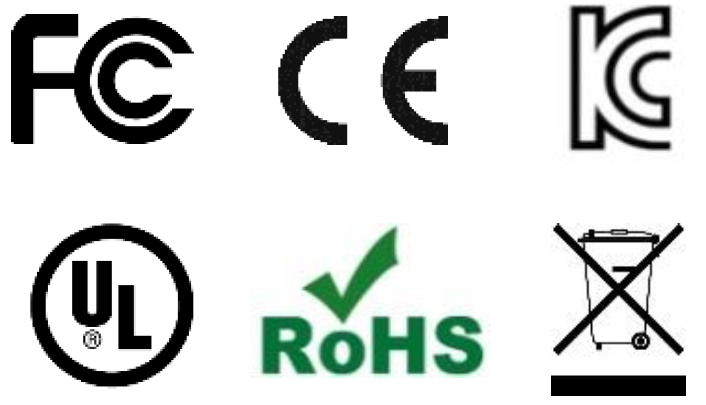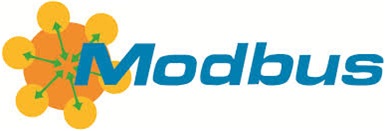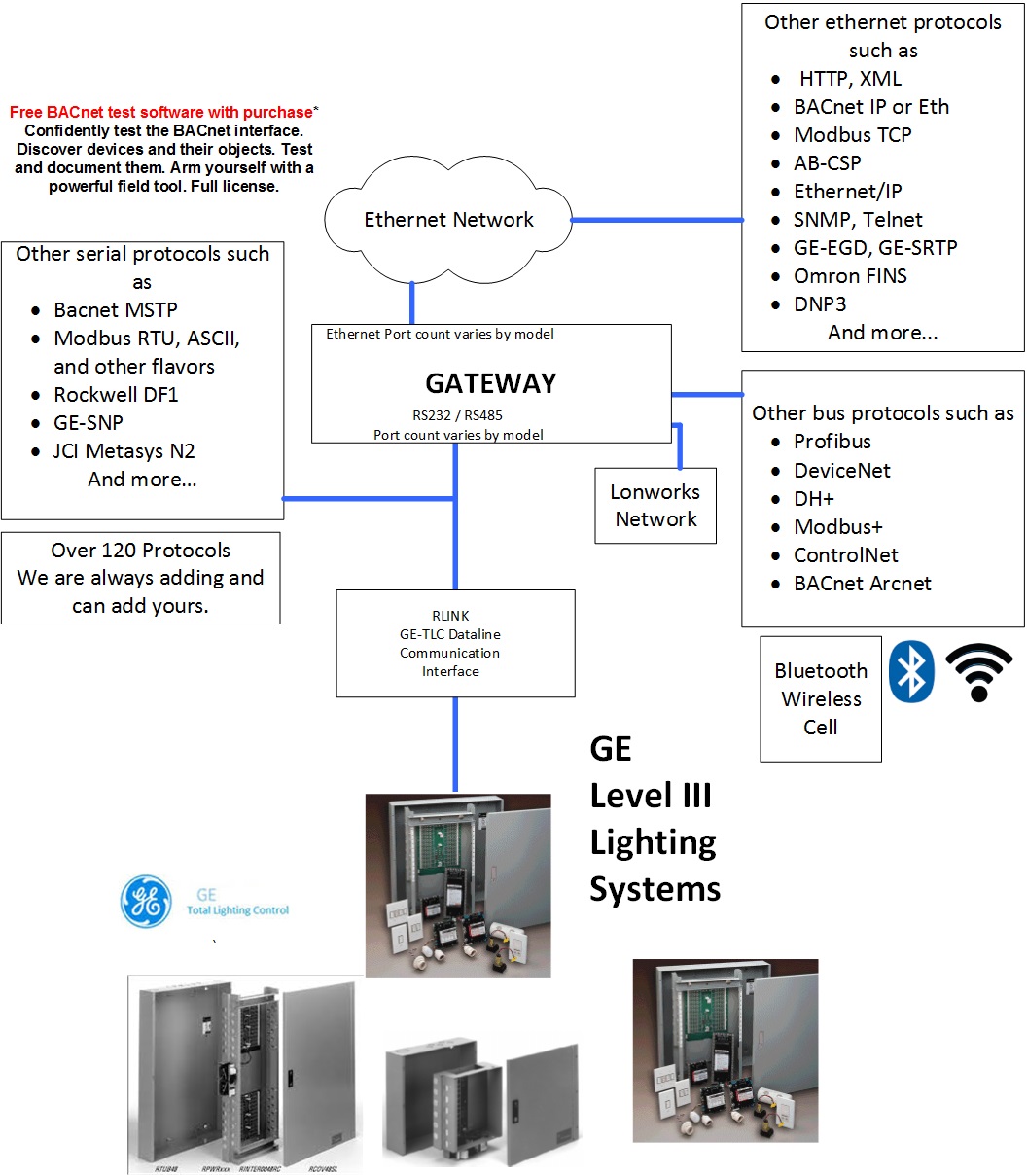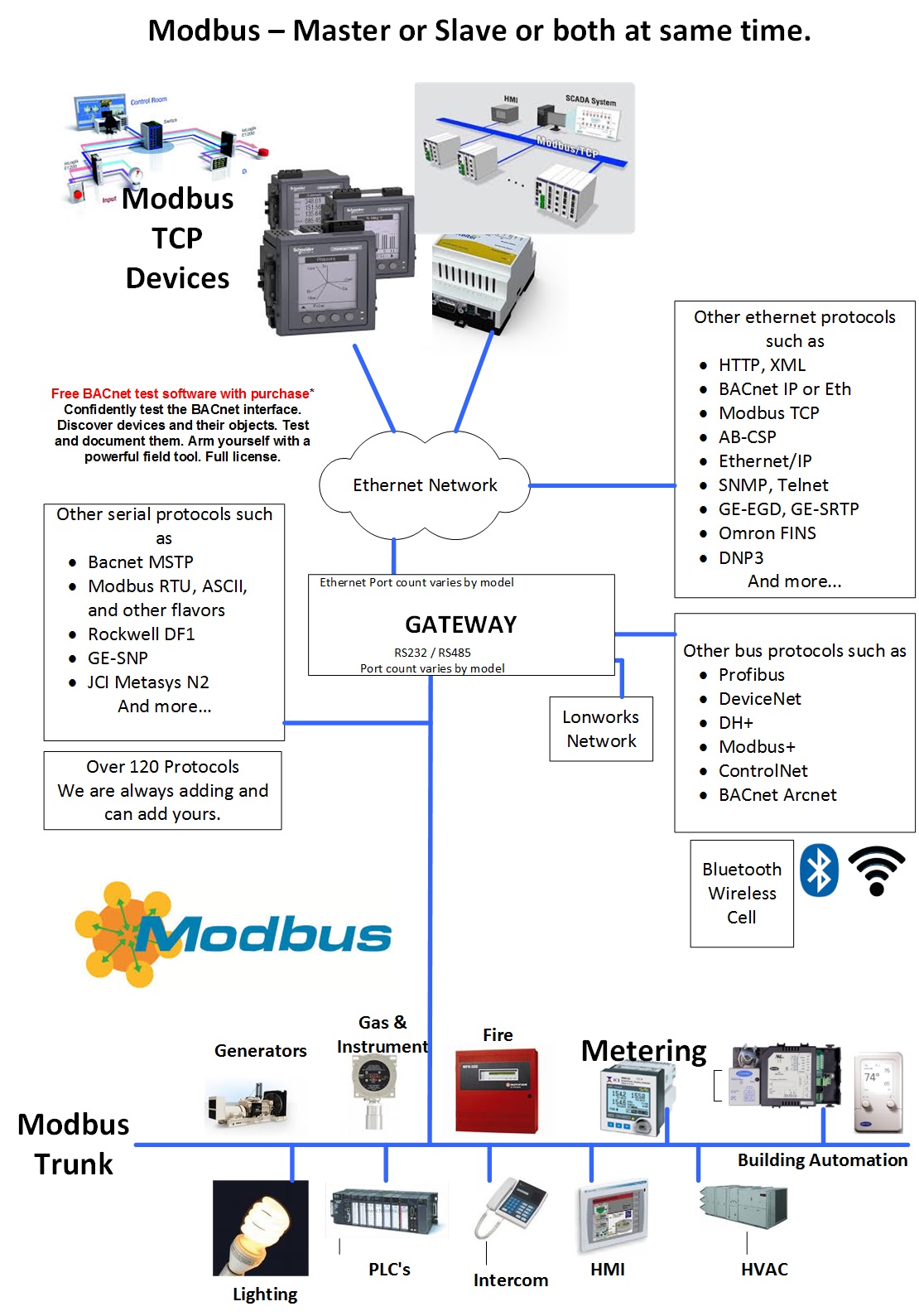Quickserver Gateway (Serial-Ethernet)
The QuickServer is a high performance, fully configurable, cost effective Building and Industrial Automation gateway for integrators to easily interface devices to networks in commercial buildings and industrial plants.
System integrators world-wide have benefitted from the value of the powerful line of interoperability gateways offered by FieldServer. Now, QuickServer adds to that value by running the same robust FieldServer protocol conversion software on a highly cost effective platform backed by the experience, engineering expertise and proven technical support that integrators have come to expect from FieldServer.
QuickServer (Serial-Ethernet) is available in two series:
The QuickServer FS-QS-2X10 series is available at four different point capacities. Each QuickServer is preloaded with two drivers (serial and/or Ethernet) from a customer’s choice of 140 different drivers, E.G. Modbus, BACnet, SNMP, EtherNet/IP and many more.
The FS-QS-2010 with 2 RS485 and 1 ethernet port can support up to 250 points. The FS-QS-2210 can support up to 500 points. The FS-QS-2310 can support up to 3,000 points. The FS-QS-2410 can support up to 5,000 points.
Equivalently the FS-QS-2020 with 1 RS485, 1 RS232 and 1 ethernet port can support up to 250 points. The FS-QS-2220 can support up to 500 points. The FS-QS-2320 can support up to 3,000 points. The FS-QS-2420 can support up to 5,000 points.
Every QuickServer includes browser-based tools to make it easy to set-up QuickServer and perform diagnostics including determination of status, network settings, node information, map descriptors and more. The USB flash drive also includes the Discovery utility to determine what FieldServers are on a network.
BTL Mark is registered to the MSA BACnet Driver for MSA QuickServer line of products
Dual Ethernet Port Quickserver Gateway (Serial-Ethernet)
The Dual port QuickServer takes the QuickServers to the next level with Security and Power. With two Ethernet ports, the Dual port QuickServer allows data to move seamlessly across disparate subnets, using a dedicated port for Cloud connectivity. This port isolation allows for enhanced LAN security from the BMS/WAN/Cloud. An embedded OpenVPN Server enables secure remote access to Ethernet devices in the field.
The QuickServer FS-QS-3X10-F series is available at four different point capacities. Each QuickServer is preloaded with 140 different drivers, such as Modbus, BACnet, SNMP, EtherNet/IP and many more. See page 3 for the complete list. The FS-QS-3010-F can support up to 250 points. The FS-QS-3110-F can support up to 500 points. The FS-QS-3210-F can support up to 1,000 points. The FS-QS-3310-F can support up to 3,000 points. The FS-QS-3410-F can support up to 5,000 points. The FS-QS-3510-Fire can support up to 10,000 points.
Modbus TCP
The Modbus TCP Driver allows the FieldServer to transfer data to and from devices over Ethernet using Modbus TCP Protocol. The Modbus TCP driver uses port 502. This port is not configurable. The driver was developed for Modbus Application Protocol Specification V1.1a" from Modbus-IDA. The specification can be found at www.modbus.org. The FieldServer can emulate both a Client and a Server simultaneously on the same ethernet port.
There are various register mapping models being followed by various vendors. To cover all these models FieldServer uses the following three Models
- Modicon_5digit – Use this format where addresses are defined in 0xxxx, 1xxxx, 3xxxx or 4xxxx format. A maximum of 9999 registers can be mapped of each type. This is FieldServer driver’s default format.
- ADU –Application Data Unit address. Use this format where addresses of each type are defined in the range 1-65536
- PDU –Protocol Data unit address. Use this format where addresses of each type are defined in the range 0-65535.
The key difference between ADU and PDU is for example if Address_Type is ADU and address is 1, the driver will poll for register 0. If Address_Type is PDU, the driver will poll for address 1.
Note 1: If vendor document shows addresses in extended Modicon (i.e. 6 digit) format like 4xxxxx then consider these addresses as xxxxx (omit the first digit) and use either ADU or PDU
Note 2: The purpose of providing 3 different ways of addressing the Modbus registers is to allow the user to choose the addressing system most compatible with the address list being used. At the protocol level, the same protocol specification is used for all three with the exception of the limited address range for Modicon_5digit.
GE TLC
This serial driver allows connectivity to a GE-TLC network by providing data transfer to the RLINK device. The RLINK device is provided by GE Lighting Controls as a gateway between its proprietary network and building automation networks. Thus to provide data transfer between a 3rd party protocol such as BACnet, it is necessary to connect the BACnet network to the RLINK by means of a FieldServer.
The driver may be configured as a client or server. The Client functionality is fully documented and supported. The FieldServer cannot be used as a substitute for the RLINK device – for this reason the server side functionality is not documented. If you are interested using the server side please contact the sales group.
As a client the driver is capable of:
- polling for status data, sending commands to operate the relays
- sending commands as if a PSS switch had been operated
- receiving unsolicited status messages from the TLC network.
The driver can be configured as an adapter – a device which reads a predefined data set and automatically make its available as a set of BACnet data objects.
The driver can support a simultaneous connection for a PC running TLC configuration software.
Specifications
FS-QS-3XX0, FS-QS-2XX0
Environment
- Operating Temperature: -20 to 70°C (-4 to 158°F)
- Relative Humidity: 10-95% RH non-condensing
Power Requirements
- Input: 24VAC 0.125A, 9-30VDC 0.25A @12 VDC
- Max Power: 3W
Physical Dimensions
- Dimensions (WxDxH): 4 x 1.1 x 2.7 in (10.16 x 2.8 x 6.8cm)
- Weight: 0.4 lbs (0.2 Kg)
Other
Web configuration
On-board diagnostics
DIN rail mount included
Communication
FS-QS-3XX0
- Baud: 9600, 19200, 38400, 57600, 76800, 115000
- Serial (Galvanic Isolation): 1 x RS-485/RS-232 & 1 x RS-485
- Ethernet: 2 x 10/100BaseT, MDIX, DHCP for Dual, 1 x for Single
Approvals
- CE and FCC Class B & C Part 15
- BTL Marked
- UL 60950-1 and CAN/CSA C22 2
- IC Canada & KC Certification
- RoHS3 and WEEE complaint

Additional Information
Modbus - MK10 and 32 Bits Numbers
Scaling in Modbus
Modbus does not provide a method for transporting large or Floating Point numbers or a mechanism for scaling analog values. A 16 bit word can only contain values in the range 0-65535. Only whole numbers are permitted. To work around this many server device manufacturers use multipliers and document them in their manuals. For example, to report a temperature of 58.5 the device reports a value of 585, and makes a note in the manual that the master should scale by 10. This scaling is achieved by adopting a convention between the client and the server.
What about large numbers > 65535
Modbus does not provide a mechanism but 3 important schemes are widely used.
Long Integers – Two consecutive 16 bit words are interpreted as a 32 bit long integer.
MK10 values – Two consecutive words are used. The 1st reports the number of units and the 2nd reports the number of 10,000’s.
Floating Point Numbers – Two consecutive words are used and a scheme. These schemes are conventions and not all servers or clients support them.
The protocol does not identify these big numbers. Only the vendor docs do.
What we mean by this is – if you look at the byte stream in a Modbus message there is no way of telling whether you are looking at two consecutive 16 bit words, or two consecutive words that should be interpreted as floating point, long or MK10 formats. Because of this you always have to look to the vendor docs.
Modbus - Reading Vendor Modbus Maps
Reading Vendor Modbus Maps
If you are reading the documentation for sensor blocks, valves, and other devices, you must keep in mind that some vendors may document their hardware in different ways.
According to the Modbus standard, addresses are simply integers from 0 to 65,535 with the different address ranges being referred to as coils, holding registers, etc. However, some vendors will document their hardware using numerical prefixes which are not actually part of the Modbus address. This originated from some models of PLCs which used the Modbus communications protocol, and which also used numerical prefixes in their internal data table. This is similar to using “I”, “Q”, “V”, etc. as address prefixes in IEC type PLCs.
However, it is important to remember that these numerical prefixes are documentation methods and are not part of what the Modbus protocol itself sends as part of the messages. A difference in documentation methods does not affect the compatibility of the protocol itself.
These prefixes are they mentioned anywhere in the Modbus standard, but the following shows how they are typically used in documentation based on this older convention:
- 0xxxx – Coils.
- 1xxxx – Discrete inputs.
- 3xxxx – Input registers.
- 4xxxx – Holding registers.
Note that there is no 2xxxx address prefix.
In addition to numerical prefixes, some documentation will refer to protocol addresses (addresses start at 0), while other documentation will refer to data model addresses (addresses start at 1). That is, the first holding register may be 0 or 1 (or 40000 versus 40001 using prefixes). However, this has no bearing on what gets sent over the wire as a Modbus message. For a Modbus protocol message, the lowest address is always “0”, not “1”.
Modbus - Protocol Specifications
Protocol Specifications
Modbus - Flavors of Modbus
Flavors of Modbus
RTU:
Common
Binary Protocol.
Active Master-passive Slave
Serial
Supported by FieldServers, QuickServers, CAS gateways
ASCII:
Similar to ModbusRTU but for each byte in an RTU message, there are 2 bytes in an ASCII message. The 2 bytes are the humand readable form of the single hex byte.
Eg RTU byte = 0x03 (Hex). ASCII bytes = ‘0’ and ‘3’ ie 0x30 and 0x33
Active Master-passive Slave
Serial
Supported by FieldServers, QuickServers
Jbus:
Modbus had the limitation of a max of 9999 items of each type. Ie only 9999 holding registers. However the protocol message allows 65k items to be addressed. JBUS allows all 65k items to be read/written. Other than that it is identical to RTU
Active Master-passive Slave
Serial
Supported by FieldServers, QuickServers, CAS gateways
TCP/IP:
Uses TCP/IP connection based Ethernet communications
Encapsulates RTU messages and adds a header.
A single slave can respond to multiple masters
Many slaves ignore the NodeID field in the message.
Supported by FieldServers, QuickServers, CAS gateways
MB Plus:
Proprietary coax networking layer
2 Mbits/sec
Supported by FieldServers, CAS gateways
Logos









